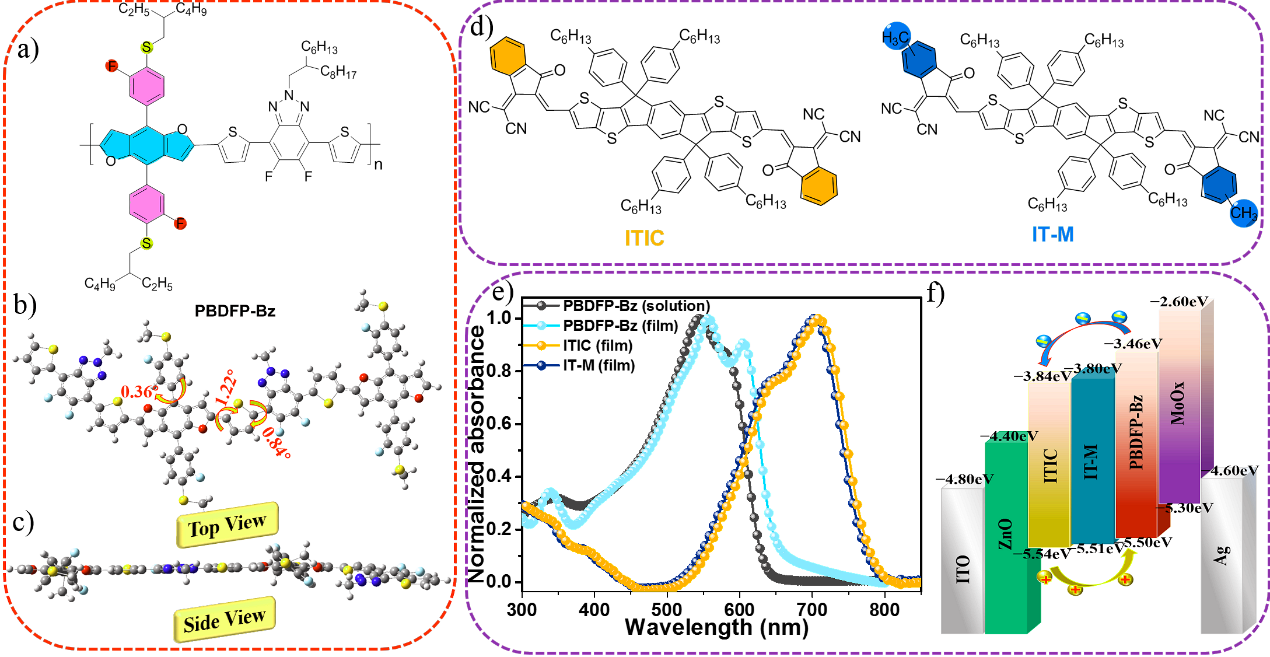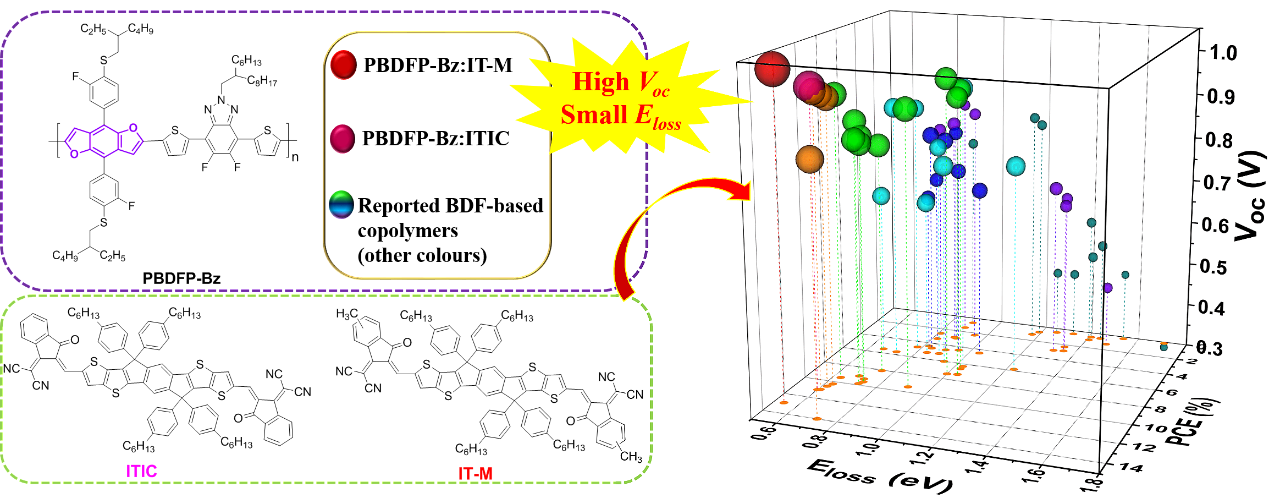Recently, the group of Furui Tan from the Key Laboratory of Photovoltaic Materials in Henan University has made the latest achievement in the field of polymer solar cells (PSCs). Meanwhile, the corresponding work entitled by “Novel benzo[1,2-b:4,5-b']difuran-based copolymer enables efficient polymer solar cells with small energy loss and high VOC” is published in Nano Energy (2020, 76, 104964. IF 16.606).
In the last 5 years, benzofuran (BDF) unit has attracted considerable interest of researchers in the construction of high-performance wide-bandgap polymer donor materials due to its intrinsic advantages, such as available from biorenewable sources with low cost, environmentally friendly, facile synthesis, large coplanar structure, high charge mobility et al. Although BDF-based copolymers have displayed some success in fabricating efficient PSCs, the corresponding PSCs still suffer from a large discrepancy between the bandgap (Egap) and the open circuit voltage (Voc), which is evaluated by an energy loss (Eloss) defined as Eloss=Egap−qVoc. Generally, the Egap and Voc both correlates closely with the highest occupied molecular orbital (HOMO) energy level of the polymer donor materials. Therefore, active management on polymer structure to optimize the HOMO energy level and the Eloss would be an effective and important strategy for further improving the photovoltaic performance of PSCs.
To the end, the group of Furui Tan designed and synthesized a novel copolymer PBDFP-Bz (Fig. 1) based on BDF and benzotriazole, where the BDF unit was modified by (2-ethylhexyl)(2-fluorophenyl)sulfane side chain. PBDFP-Bz displays large coplanar structure and deep-lying highest occupied molecular orbital energy level of −5.50 eV. PSCs based on PBDFP-Bz as donor and small molecule ITIC as acceptor achieved a power conversion efficiency (PCE) of 11.10% with Voc of 0.97 V and Eloss of 0.60 eV. Moreover, when adopting small molecule IT-M to replace ITIC, PBDFP-Bz:IT-M based PSCs delivered a larger Voc of 1.02 V and a smaller Eloss of 0.57 eV due to the shallower lowest unoccupied molecular orbital energy level of IT-M versus that of ITIC. Importantly, a remarkable PCE of 12.93% was also obtained for PBDFP-Bz:IT-M based PSCs, which is among attractive photovoltaic performance of PSCs containing BDF-based copolymers (Fig. 2). This work not only suggests that PBDFP-Bz is a promising copolymer for efficient PSCs fabrication, but also shed light on the design rule that managing the molecular structure of photovoltaic material and its energy level is an effective strategy to fabricate highly efficient PSCs.
Henan University is the first instituation of the above work, in which Yueyue Gao and Zhitao Shen as two young outstanding teachers being the coauthors of the work. The associate-professor Furui Tan is the first corresponding author, and the professor Zhijie Wang from Institute of Semiconductors, Chienese Academy of Sciences is also the corresponding author. The research work is supported by the Postdoctoral Fund of China (FJ3050A0670111), the National Natural Science Foundation of China (61704047), the National Key Research and Development Program of China (2017YFA0206600) and the Strategic Priority Research Program of Chinese Academy of Sciences (XDB43000000).

Fig. 1 The moleular structure and physical-chemistry properties of the target copolymer PBDFP-Bz

Fig. 2 Plots of open-circuit voltage (Voc) against energy loss (Eloss) and PCE of PSCs containing benzo[1,2-b:4,5-b']difuran (BDF)-based copolymers.
Links: https://www.sciencedirect.com/science/article/pii/S2211285520305413
 俄文 /
Исследование /
Content
俄文 /
Исследование /
Content
